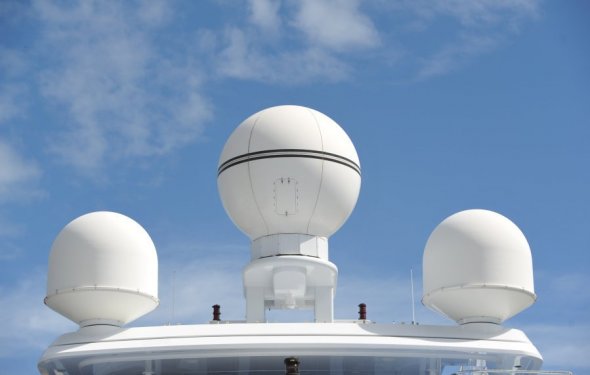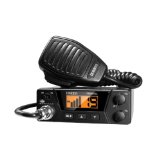Antenna for television

Q: how to pick up throughout the Air (OTA) Digital and HDTV broadcasts?
A: you will find currently three ways to get the local channels:
- a within the Air just digital receiver that will tune in just the neighborhood networks. A unit with HD outputs can be bought at any electronic devices string for about $99-$199. One benefit to that is you will see no month-to-month fees. Note: for $40 -$60, coupon suitable converter containers will grab the HDTV signals and down convert all of them to 480I to be displayed on an analog television.
- An HDTV with a built-in OTA tuner. Note: All TVs made after 2007 needs to have an ATSC integrated. (if the television claims “HD prepared” it generally does not have an electronic tuner integrated).
- An HD satellite tuner. Both Dish system and Direct television provide HDTV satellite receivers aided by the on the air tuner built into the exact same unit. The advantage of like this is that you don't have to work with individual gear to receive advanced HD systems like HBO HD and ShowTime HD. Also, the local and satellite channels can both be incorporated into the program guide, to really make it seamless for the audience whenever switching between regional and satellite. You'll need an over the atmosphere antenna (like people we sell) as well as the meal connected to the receiver. These receivers can cost anywhere from $199- $499 although with specials & offers it is often feasible locate all of them for never as. (Note: some DirecTV devices today need an independent ATSC tuning component)
Q: Are Digital Channels on UHF?
A: No, but at this time (before Summer 2009), 91percent of broadcasting DTV programs take UHF. Various urban centers, such as for example Chicago and Las Vegas have DTV channels on VHF as well as UHF. While Many DTV stations are now occupying UHF broadcast channels, the plan will allow some broadcasters to move back to their original VHF or UHF TV channels once the transition to DTV is complete. After Summer of 2009: 74% of this DTV channels are on UHF (14-51), 24percent will likely be on large VHF (7-13) much less than 2percent may be on reduced VHF(2-6). To find out more, kindly see .
Q: How is reception in remote or "fringe" areas? Am I going to get a fuzzy photo?
A: regarding electronic television, it is an "all or almost nothing" proposition. When the signal is obtained, a stable blast of information assures you'll get a fantastic picture and great sound. If that bit stream is interrupted, however, you will see absolutely nothing - just a blank display. In areas with a lot of structures or obstacles, multi-path distortion could cause a "cliff impact" to activate. The fix is to try using a higher-gain antenna assuming the multi-path is tamed. Tasks are being carried out to look for the ideal styles for improving error modification in set-top receivers.
Q: how can analog TV broadcasts and DTV contrast to each other?
A: there are a few similarities. Both use VHF and UHF broadcast frequencies. While analog and digital tv broadcasts have actually a modulated company wave, the way that signal is modulated is completely various. Analog TV uses an amplitude-modulated (AM) signal for photographs and regularity modulation (FM) for audio, while DTV indicators make use of digital "packets", to send photographs and sound.
The modulation system increasingly being employed for DTV in the us is Eight Level Vestigial Sideband (8VSB). As Terrestrial Digital / HDTV broadcasts be prominent, UHF antennas will play a bigger role because almost all the HDTV/Digital channel allocations is in UHF frequency musical organization.
Q: Getting VHF programs are a challenge in my situation. I get the rest good.
A: numerous programs which have reverted to VHF tasks have dramatically cut their particular transmitter power, in many cases by over 90percent! Some stations erroneously believed they could save cash by cutting their particular power while attaining the same number of visitors. In other instances the FCC imposed paid down energy limitations to stations that reverted to their old VHF assignments to avoid interference with adjacent areas. There has been a misperception among some place owners that while significantly bringing down DTV transmitter energy, they could serve the exact same coverage location as analog, which features turned out to be wrong. Numerous programs that have reverted back into VHF are actually finding on their own with significantly decreased coverage places and a lot fewer audiences after changing to VHF. Numerous programs realizing their mistake have actually requested greater energy projects (or UHF channel projects) from the FCC, although procedure could take over per year. Inside interim, a new large gain large VHF antenna, the Clearstream 5 are forthcoming. This might replace regarding enjoy part some of just what is lost. The Clearstream 5 has an expected ship date recently Summer 2009.
One prospective issue with re-using reasonable VHF (2-6) and high VHF (7-13) television stations for DTV could be the chance of interference from other indicators during certain times of the season. "Skip" may generate distant broadcasts on a single station and produce disturbance. Minimal VHF (2-6) digital broadcasts tend to be specifically at risk of interference and is frequently difficult to get reliably, regardless of what model of antenna is used. Note: The real size of reasonable VHF and high VHF antennas is a lot bigger than compared to a UHF antenna.
Q: Something a Yagi?
A: The Yagi antenna is paid to Hidetsugu Yagi (although not the first inventor), A Japanese physicist. The Yagi was made to improve the gain associated with the antenna focused in a single path. The directivity is achieved with additional elements called administrators and reflectors. The Yagi has high Gain, is very directional, and has now thin data transfer. In easy unidirectional antennas such as the Yagi, frequency bandwidth is inversely proportional to antenna gain. One good way to increase the regularity data transfer of a simple antenna like a Yagi, is to boost the diameter of the antenna conductors. The more the conductor diameter, the wider the musical organization with additional conductor diameter even offers an extra advantage, it raises the physical power for the antennas.
Q: What is the difference between UHF and VHF antennas?
A: the obvious difference between VHF and UHF antennas could be the dimensions. A half trend dipole for station 2 will be 10 times more than for station 28. Which means an infinitely more sophisticated UHF antenna can be constructed with no antenna becoming literally unmanageable. With increased elements added to the UHF antenna, greater gain and directivity can be had.
Q: What is the Bow link Antenna?
A: A bow link antenna is yet another name for a UHF fan dipole antenna. By utilizing triangular elements in the place of rods, the data transfer is significantly increased, to cover the complete UHF band. Also, the mesh reflector associated with bowtie is much more efficient...
|
Digital Converter Box + Digital Antenna + RCA Cable - Complete Bundle to View and Record HD Channels For FREE Instant or Scheduled Recording, 1080P HDTV, and HDMI Output Home Theater (eXuby®)
|

|
Tune Your Chess Tactics Antenna: Know When (and where!) to Look for Winning Combinations Book (New In Chess,Csi)
|
|
Oil Painting 'a Brown Dog', 10 x 14 inch / 25 x 35 cm , on High Definition HD canvas prints is for Gifts And Foyer, Kids Room And Living Room Decoration, where to buy Home (LuxorPre)
|
|
|
Mohu Leaf 50 TV Antenna, Indoor, Amplified, 50 Mile Range, Original Paper-thin, Reversible, Paintable, 4K-Ready HDTV, 16 Foot Detachable Cable, Premium Materials for Performance, USA Made, MH-110584 Speakers (Mohu)
|
|

|
Uniden 40-Channel CB Radio (PRO505XL) Wireless (Uniden)
|